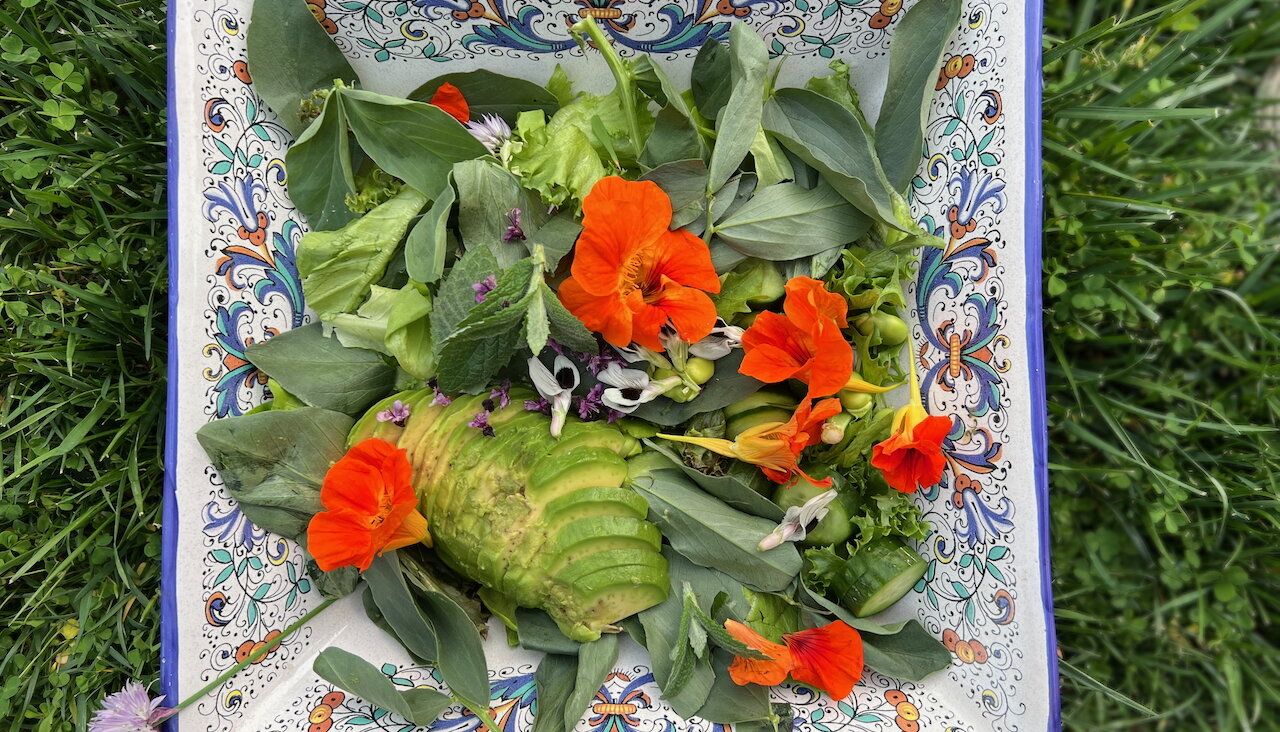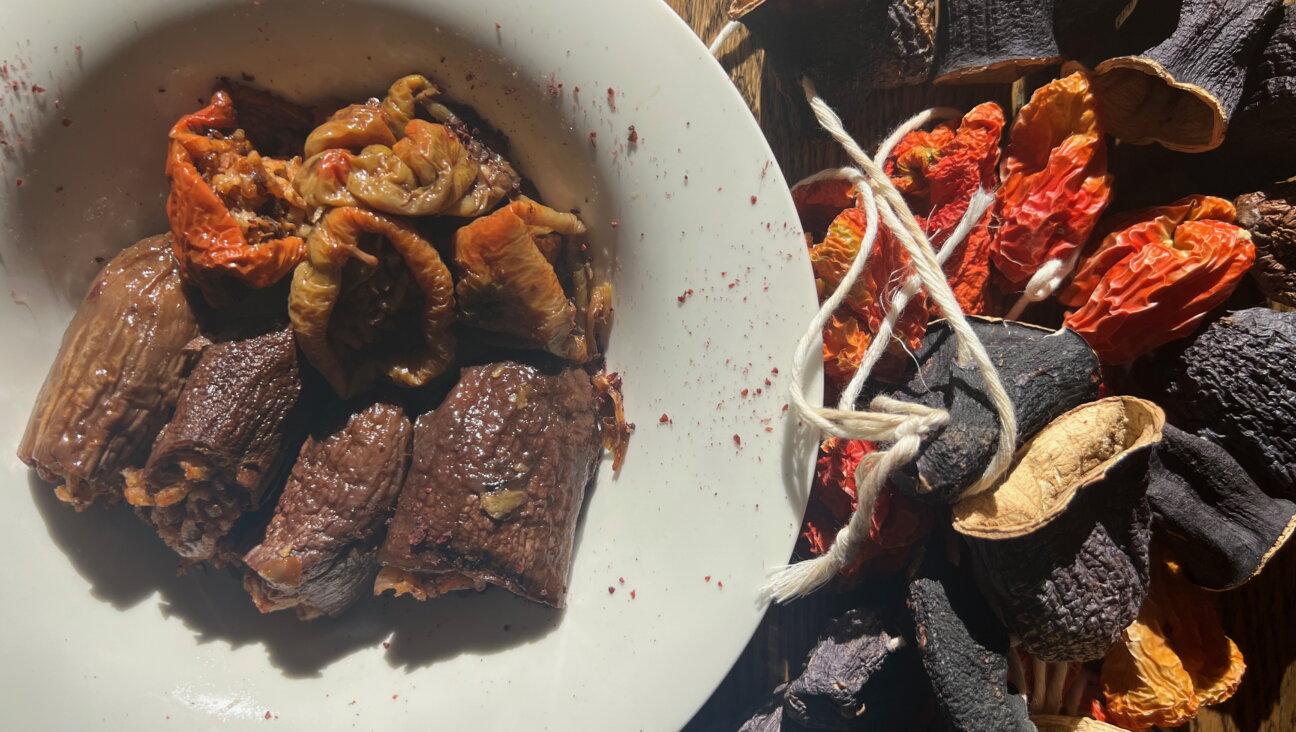Shabbat Meals: The Taste of Home — Fragrant and Tangy Georgian Khalia

My family moved from Georgia to Israel when I was seven years old to escape the brutal anti-Semitism of the Georgian civil war in 1992. Less than four years later, our parents moved me and my sister to Queens, NY. As a 10 year old, I took this third major upheaval in our lives the hardest. For months I walked around muttering “I want to go home,” in both Hebrew and Georgian, rebelling against the thought of settling in to yet another new life, fearing that my family would once again be uprooted. My mother patiently sat me down one day and asked me where I thought home was, exactly. I couldn’t answer her because I wasn’t sure myself.
In those first few years in Queens, as we adjusted to our lives in the very Jewish neighborhood of Rego Park, my parents emphasized just how important it was to stay together as a unit. “If there are cracks in the family, there is no hope,” my father used to say whenever my sister and I squabbled. And until we headed to college, he and my mother made it a point to maintain Friday evenings as our sacred day for gathering to celebrate not just Shabbat, but more importantly, our family. Dinner was always followed by a movie and late-night conversations — where we had come from, what we survived and where we were going to go as a foursome was retold and reimagined every Friday evening.
On those Friday evenings, my mother often made a tangy beef stew specific to Georgian Jews, khalia, which her own mother and grandmother used to make for Shabbat. A dish she prepared throughout my childhood in Georgia, and then in Israel, the smell of the spices and tamarind paste was so familiar and soothing, it lessened the sting of the unfamiliar.
Jews in Georgia can trace their history to the 6th century BCE. when they settled along the small Black Sea region. In the shadows of the Caucaus Mountains, Georgian Jews lived in communities removed from their Muslim and Christian neighbors, developing a subculture of traditions, and of course, a cuisine that was distinctly Jewish.
Khalia is often served on Shabbat and rarely eaten outside of the Jewish community in Georgia. Simple to prepare, its aromatic scent comes from a mix of freshly ground dry coriander, fenugreek and tart tamarind paste, added to the slow-cooked beef. The dish can also be prepared with chicken thighs, using the same recipe. Traditionally, when khalia is made with chicken, whole hard boiled eggs are carefully added to the final stages of cooking. In some regions of Georgia, color and flavor were added with chopped fresh cilantro or parsley in the last moments of cooking, right before turning off the heat. And depending on one’s preference, khalia can be prepared as a thick sauce or served as a soup, but it is most often served over traditional Georgian savory grits, though rice and tandoori bread pair well with it too.
I have attempted to make myself on several occasions, a tribute to the three generations of Georgian women who have passed the recipe down to me, but especially to my mother, who has made the same dish across three continents. With the smell of her khalia in the kitchen, I will always feel that I’m home, wherever that may be.
Khalia
3 pounds of beef, flank preferred
3 to 4 finely chopped yellow onions
6 to 7 cloves of minced garlic
½ teaspoon red pepper flakes
½ teaspoon ground black pepper
½ teaspoon salt (more can be added depending on preferred taste)
1 scant teaspoon of dry coriander
1 scant teaspoon of fenugreek
1 teaspoon of tomato paste
1 teaspoon of tamarind paste
¼ cup+ 2 tablespoons of vegetable oil
1) Wash the beef and cut into one inch cubes.
2) Boil the beef until it is thoroughly cooked and rinse off the residue that it produces.
3) In a separate bowl, except for the oil, mix all the ingredients together. (My mother does it with her hands, it mixes the dry and wet ingredients better than with a spoon.)
4) Mix the beef into the bowl and make sure all the beef is covered by the ingredients.
5) Coat the bottom of a large pot with two tablespoons of vegetable oil. Add meat mixture and cook on low heat on the burner with the lid slightly uncovered anywhere from 1 ½ hours to 2 hours until the meat is fully infused with the flavor of the sauce.
6) Add the remaining ¼ cup oil about halfway through cooking and mix through.
7) Serve with hot grits (my mother prepares grits just like the instructions on the back of a package say, except in the last 10 minutes she mixes in about ½ cup of Aunt Jemima’s white corn meal mix to thicken the grits), white rice or tandoori bread.
The Forward is free to read, but it isn’t free to produce

I hope you appreciated this article. Before you go, I’d like to ask you to please support the Forward.
Now more than ever, American Jews need independent news they can trust, with reporting driven by truth, not ideology. We serve you, not any ideological agenda.
At a time when other newsrooms are closing or cutting back, the Forward has removed its paywall and invested additional resources to report on the ground from Israel and around the U.S. on the impact of the war, rising antisemitism and polarized discourse.
This is a great time to support independent Jewish journalism you rely on. Make a gift today!
— Rachel Fishman Feddersen, Publisher and CEO
Support our mission to tell the Jewish story fully and fairly.
Most Popular
- 1

Fast Forward Ye debuts ‘Heil Hitler’ music video that includes a sample of a Hitler speech
- 2

Opinion It looks like Israel totally underestimated Trump
- 3

Culture Cardinals are Catholic, not Jewish — so why do they all wear yarmulkes?
- 4

Fast Forward Student suspended for ‘F— the Jews’ video defends himself on antisemitic podcast
In Case You Missed It
-

Culture How one Jewish woman fought the Nazis — and helped found a new Italian republic
-

Opinion It looks like Israel totally underestimated Trump
-

Fast Forward Betar ‘almost exclusively triggered’ former student’s detention, judge says
-

Fast Forward ‘Honey, he’s had enough of you’: Trump’s Middle East moves increasingly appear to sideline Israel
-
Shop the Forward Store
100% of profits support our journalism
Republish This Story
Please read before republishing
We’re happy to make this story available to republish for free, unless it originated with JTA, Haaretz or another publication (as indicated on the article) and as long as you follow our guidelines.
You must comply with the following:
- Credit the Forward
- Retain our pixel
- Preserve our canonical link in Google search
- Add a noindex tag in Google search
See our full guidelines for more information, and this guide for detail about canonical URLs.
To republish, copy the HTML by clicking on the yellow button to the right; it includes our tracking pixel, all paragraph styles and hyperlinks, the author byline and credit to the Forward. It does not include images; to avoid copyright violations, you must add them manually, following our guidelines. Please email us at [email protected], subject line “republish,” with any questions or to let us know what stories you’re picking up.
















